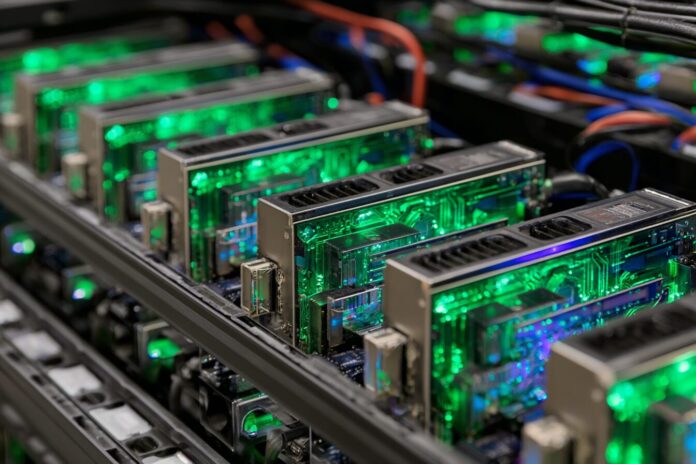Leading the Charge in the AI Ecosystem
AMD has boldly unveiled a comprehensive AI roadmap that touches every vital element in today’s rapidly evolving artificial intelligence landscape. Most importantly, this roadmap addresses key components that are essential for sustaining AI growth in both data centers and cloud-based services. Because the industry is transitioning to more robust and efficient systems, AMD’s dedicated approach is setting a new benchmark for the competition.
In addition, the company’s strategic plans incorporate not only high-performance GPUs but also cutting-edge networking and innovative software solutions. This integrated roadmap is designed to meet the diverse needs of both enterprises and hyperscalers, leading to more than just incremental improvements. Besides that, AMD is reaffirming its commitment to advancing the AI field by empowering developers and innovators worldwide.
Next-Generation GPUs: Instinct MI400 Series
AMD has introduced the Instinct MI400 GPU accelerators, which are tailored to handle the most demanding AI and machine learning workloads with exceptional performance. These new GPUs are engineered to deliver transformative processing capabilities while dramatically increasing efficiency. Because AI models are growing more complex, the need for such advanced hardware is critical to meeting future computational demands.
Furthermore, by targeting the data center market, AMD positions itself as a strong alternative to the current industry leader, Nvidia. The roadmap clearly outlines significant performance enhancements that are expected to accelerate generative AI processes. Therefore, institutions and cloud service providers looking for efficient alternatives can better leverage these GPU advancements. More details on these technological improvements are referenced in TechSpot and Data Center Frontier.
Revolutionizing Networking with Vulcan Chips
Besides that, AMD has also set its sights on transforming data center connectivity. The introduction of the next-generation Vulcan networking chips addresses the increasing demands for high-speed and low-latency communication. Most importantly, these chips are designed to enable seamless interconnections between thousands of AI accelerators, ensuring that massive neural networks operate without delays.
This enhanced networking capability is crucial because it supports distributed AI workloads across extensive data centers. In addition, the improved bandwidth and reduced latency offered by Vulcan chips promise smoother performance even under the most rigorous conditions. Therefore, stakeholders in the enterprise and cloud domains have significant reasons to invest in systems powered by AMD’s innovative networking solutions.
Advancing Open Software with ROCm 7
Equally significant, AMD has rolled out version 7 of its ROCm software platform, marking a major leap forward in open software for AI applications. The upgraded ROCm 7 is specifically optimized to work harmoniously with AMD’s hardware, thereby streamlining the integration process for developers and researchers.
Because seamless software and hardware integration is critical, this platform enhances accessibility and performance across diverse AI applications. Besides that, the evolution of ROCm illustrates AMD’s commitment to creating an open ecosystem where innovation and collaboration flourish. For further insights, refer to the official AMD Advancing AI 2025 event page and other related materials.
Helios Rack Architecture: Unified Solutions for the Future
One of the standout highlights of the roadmap is the preview of AMD’s Helios rack architecture, scheduled for release in 2026. Helios is more than just a new product; it represents a shift towards unified, scalable AI infrastructure. By amalgamating next-generation Epyc CPUs (codenamed Venice), Instinct MI400 GPUs, and Vulcan networking chips, AMD is laying the foundations for an integrated system that meets the high demands of modern AI workloads.
Most importantly, this comprehensive solution targets hyperscalers, cloud providers, and sophisticated enterprise users with an emphasis on ease of deployment and operational efficiency. Therefore, AMD’s Helios rack architecture paves the way for a seamless computing experience that encompasses every part of the AI workflow. For further details on the innovative approach behind Helios, please visit the AMD Corporate Blog.
Competitive Edge in a Crowded Market
AMD’s roadmap is not just a series of hardware launches. Instead, it is a holistic strategy aimed at challenging the longstanding dominance of competitors, particularly Nvidia. Because of this comprehensive multi-year silicon, networking, software, and rack-system plan, AMD is generating significant interest amongst investors and industry analysts.
Most importantly, the transparency in AMD’s future vision inspires confidence among partners and customers. With ambitious performance metrics and innovative designs, AMD is poised to elevate its market position. Therefore, as industry benchmarks evolve, AMD’s commitment to relentless innovation is a key driver for its future success.
Looking Forward: The Future of AI Infrastructure
The AI market is evolving at an unprecedented pace. Because it is expected to grow from $30 billion in 2023 to nearly $150 billion within the next few years, companies must adapt quickly to this dynamic environment. AMD’s strategy transcends simple hardware upgrades by creating a robust AI ecosystem that prioritizes scalability, open standards, and ease of integration.
Moreover, by fostering collaboration through open software platforms and unified hardware architectures, AMD is setting the stage for widespread AI adoption. Most importantly, this forward-thinking approach ensures that both large enterprises and innovative startups can benefit from advanced AI functionalities. As noted on platforms such as IT Pro, these developments signal a significant shift in the technological landscape.
Conclusion
In summary, AMD’s new AI roadmap is a powerful declaration of intent. Most importantly, it integrates state-of-the-art GPUs, high-speed networking, open software, and innovative rack-scale architectures into a cohesive vision for the future of AI infrastructure. Because this roadmap is designed to address today’s complex AI challenges, AMD is well-positioned to redefine industry standards. Therefore, the race to deliver scalable, efficient, and open AI solutions has intensified, with AMD charging forward to meet the evolving demands of this rapidly expanding market.
References
- TechSpot: AMD’s new AI roadmap spans GPUs, networking, software, and rack architectures
- AMD Advancing AI 2025: AMD Advancing AI 2025
- AMD Corporate Blog: AMD Delivering Open Rack Scale AI Infrastructure
- Data Center Frontier: AMD Outlines its AI Roadmap, Including New GPUs



